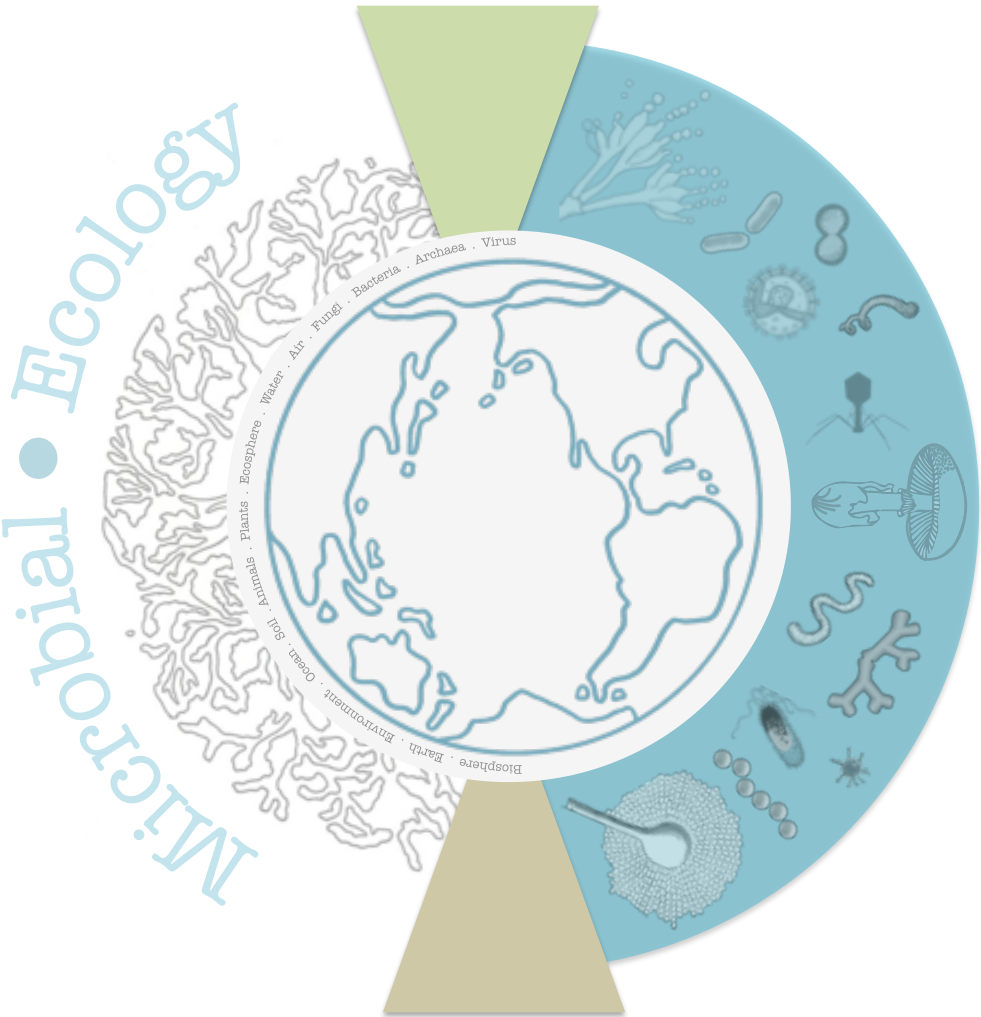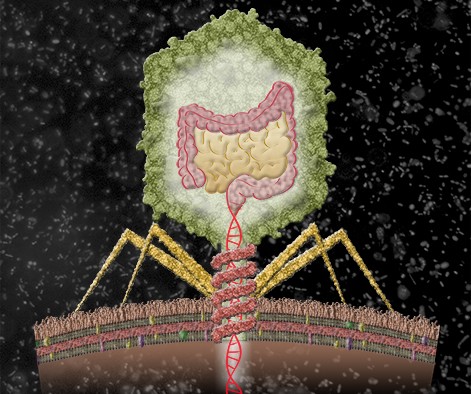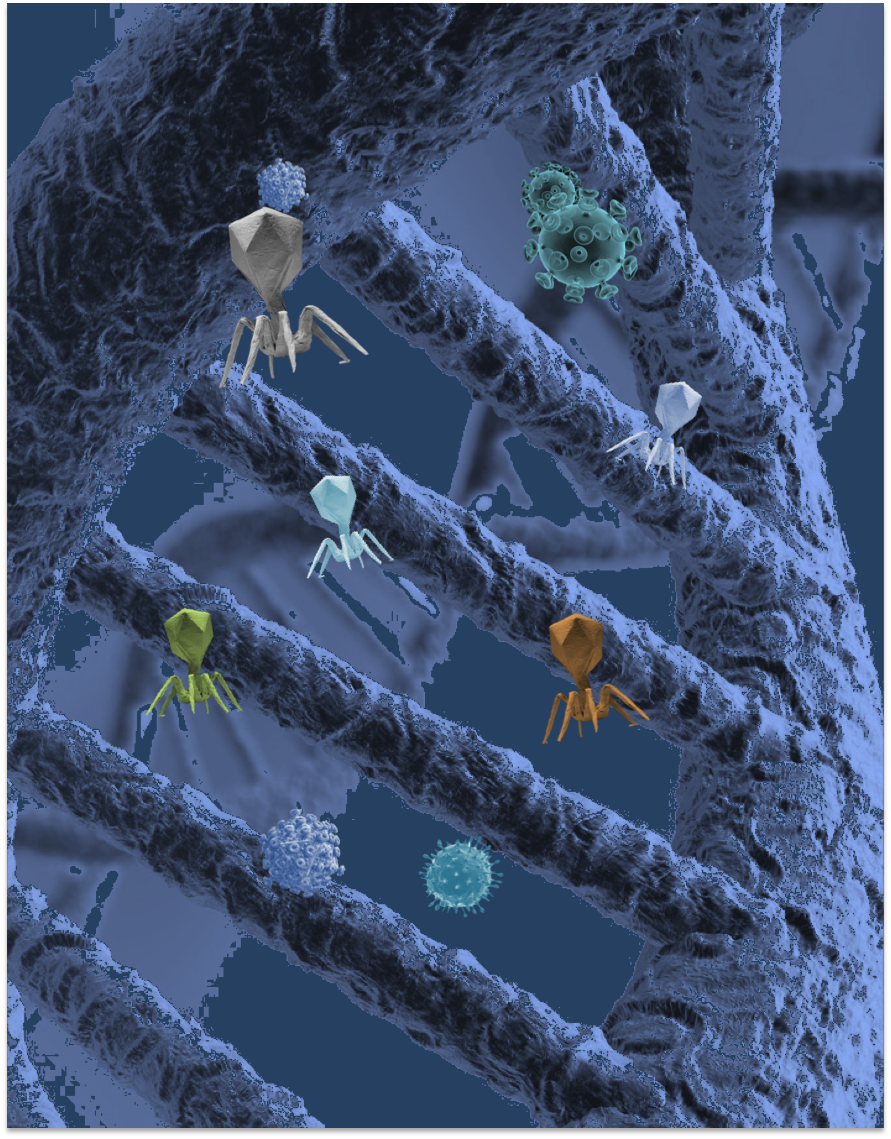Research
We work in diverse research areas such as microbial ecology, genomics, population genetics and systems biology.
Microbial Ecology
Ecology and microbiology seemed to be concepts that had nothing in common for several decades, and the field of microbial ecology took a long time to emerge and consolidate. This was largely due to the lack of tools and technologies to explore this field. However, with the development of technologies, algorithms and methodologies that allow the simultaneous study of all (micro)organisms present in an environment at a specific time, in the last decade it has been possible to study microorganisms and their interactions together in what is now known as meta-omics sciences.
Initially metagenomics allowed us to access the composition and genetic potential of environments, later transcriptomics allowed us to approach gene expression in those environments and now with proteomics and metabolomics we can begin to understand the different interactions between members of a community. However, all these techniques have developed quite rapidly and the technologies and algorithms for the analysis and interpretation of these data have evolved more in response to the particular needs of research groups than in a rational thinking to optimize the use of data and resources, taking advantage of the advances in computing capabilities that are currently available.
Omics
The human gut microbiota is the set of all organisms living in the human gastrointestinal tract. This amazingly diverse community is composed of the 3 domains of life and their respective viruses. Since the emergence of molecular techniques for the study of microbial communities, the gut microbiota has been a major target of study and large consortia such as the HMP in the USA and MetaHIT in Europe have devoted a great deal of resources to characterize these communities. However, the major effort to study these communities has been made on their prokaryotic component ignoring for the most part the viral component. In fact, this component may be greater in number and diversity than the bacterial component itself. Viruses are present in any environment where a potential host is found and their predation dynamics, lytic or lysogenic cycles can have important consequences on the dynamics and behavior of the community in general. The study and characterization of the relationships between viruses (with bacterial or eukaryotic hosts) and their diverse implications in the community and therefore their consequences in the health of the human host, are an important objective of the group’s research.
Viromics
With the emergence of new DNA sequencing techniques, the study of different environmental viral communities has been boosted, which has led us to realize that we know less than 1% of the global viral diversity. It is common in the different studies carried out on viral communities that the vast majority (80% on average) of the data remain unanalyzed because they do not have significant similarity to reference viruses (being the comparison with reference databases the main tool for analysis). Although massive sequencing techniques have boosted the number of (short) sequences of viral origin deposited in databases, sequencing of complete viral genomes has been limited, causing reference databases to stagnate in size. This makes it imperative to develop bioinformatics tools that allow us to better discover and characterize this viral diversity and unravel the full potential that these genomes are encoding. An important line of research in the group is to develop such tools adapted to modern sequencing technologies and state-of-the-art computational tools currently available.
Training in Bioinformatics
The human gut microbiota is the set of all organisms living in the human gastrointestinal tract. This amazingly diverse community is composed of the 3 domains of life and their respective viruses. Since the emergence of molecular techniques for the study of microbial communities, the gut microbiota has been a major target of study and large consortia such as the HMP in the USA and MetaHIT in Europe have devoted a great deal of resources to characterize these communities. However, the major effort to study these communities has been made on their prokaryotic component ignoring for the most part the viral component. In fact, this component may be greater in number and diversity than the bacterial component itself. Viruses are present in any environment where a potential host is found and their predation dynamics, lytic or lysogenic cycles can have important consequences on the dynamics and behavior of the community in general. The study and characterization of the relationships between viruses (with bacterial or eukaryotic hosts) and their diverse implications in the community and therefore their consequences in the health of the human host, are an important objective of the group’s research.


